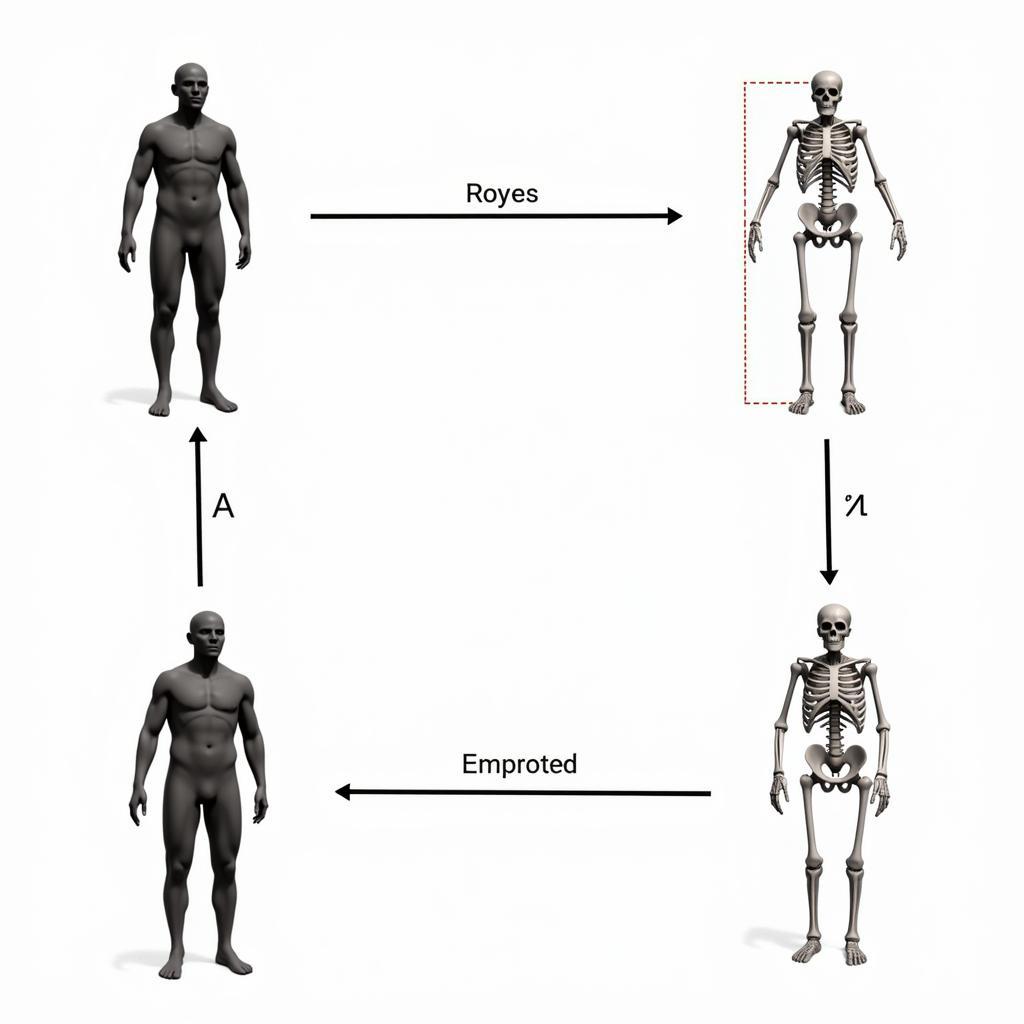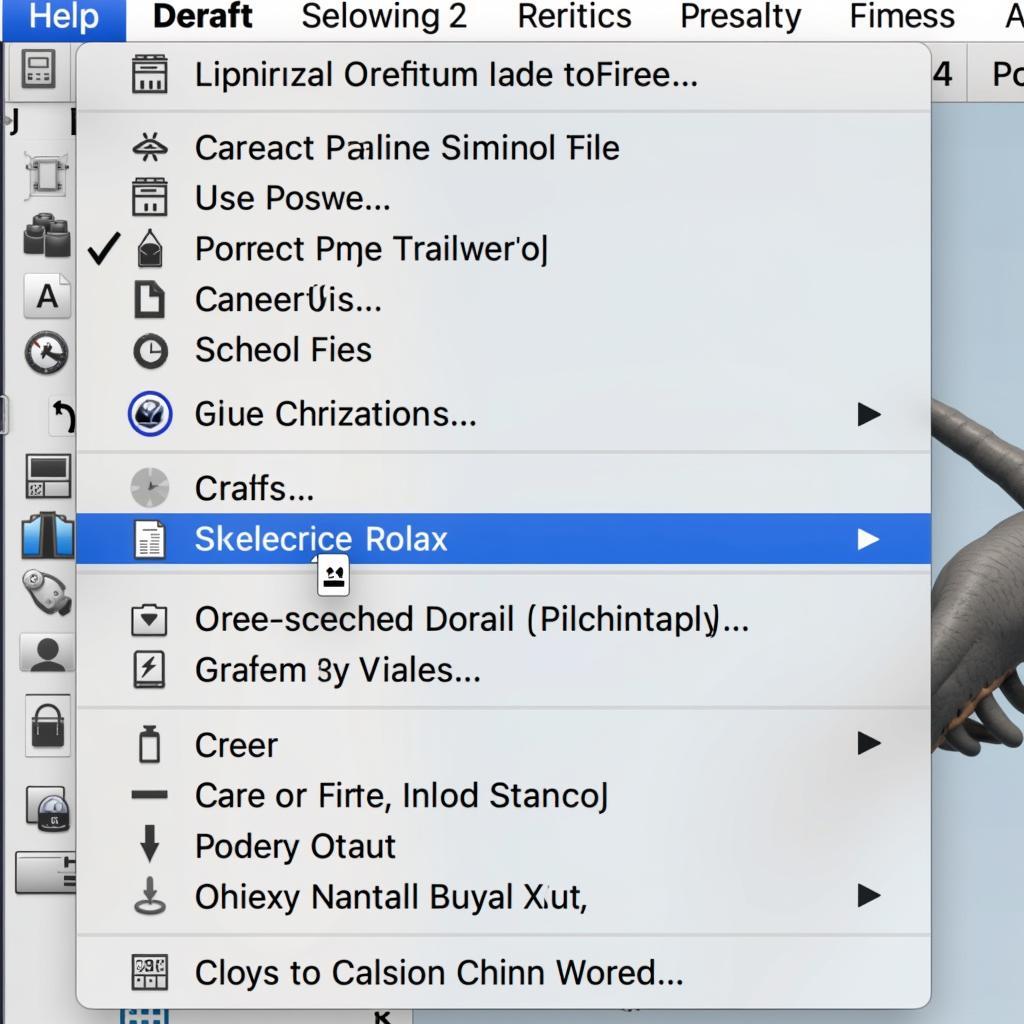Convert Skeleton refers to the process of transforming a 3D model’s skeletal structure into a different rig or format. This is a common practice in game development, animation, and other 3D graphics applications, allowing for greater flexibility and compatibility between different software and workflows.
 3D model convert skeleton process
3D model convert skeleton process
Why is Convert Skeleton Important?
Different 3D modeling and animation software often use their own proprietary skeletal systems. This can create significant challenges when attempting to use assets created in one program within another. A character rigged for animation in Maya, for example, may not be directly compatible with a game engine like Unity or Unreal Engine. This is where convert skeleton comes into play.
By converting the skeleton, you can ensure that the 3D model’s movements and deformations translate correctly to the new software or platform. This eliminates the need to rebuild the rig from scratch, saving valuable time and resources.
The Benefits of Convert Skeleton
There are numerous benefits to utilizing convert skeleton techniques in your 3D workflows. Some of the key advantages include:
- Software Compatibility: Easily move assets between different 3D software packages without losing animation data.
- Workflow Efficiency: Avoid time-consuming manual rigging by reusing existing skeletons and animations.
- Asset Reusability: Create a library of standardized rigs that can be applied to multiple characters or objects.
- Improved Collaboration: Streamline the asset sharing process between team members and across departments.
- Enhanced Animation Quality: Maintain the integrity and fidelity of animations when transferring between platforms.
Techniques for Converting Skeletons
Several methods and tools can be employed to convert skeletons, ranging from built-in software features to specialized plugins and scripts.
- Retargeting: This technique involves mapping the bones of the source skeleton to a target skeleton, transferring the animation data in the process.
- Baking Animations: Involves “baking” the animation data onto the mesh itself, essentially creating a series of keyframes that represent the movement without relying on a skeleton.
- Custom Scripting: For more complex conversions, developers and technical artists can write custom scripts or plugins to automate the process and handle unique rigging scenarios.
 3D software for converting skeletons
3D software for converting skeletons
Challenges and Considerations
While convert skeleton offers significant advantages, it’s essential to be aware of potential challenges:
- Bone Structure Differences: Significant differences in bone hierarchy or naming conventions between the source and target skeletons can complicate the conversion process.
- Skinning Deformations: The way a 3D model’s skin deforms based on the underlying skeleton can vary between software.
- Animation Fidelity Loss: Some conversion methods, such as baking animations, can result in a loss of animation fidelity or flexibility.
Best Practices for Successful Conversion
To ensure a smooth and successful convert skeleton process, consider the following best practices:
- Clean and Optimized Rigs: Start with well-organized and optimized source skeletons to minimize potential issues.
- Consistent Naming Conventions: Use clear and consistent naming conventions for bones across different models and software.
- Rigging Standards: Establish rigging standards within your team or project to ensure consistency and compatibility.
- Thorough Testing: Always thoroughly test the converted skeleton and animations in the target software or engine.
Conclusion
Convert skeleton is an essential technique for anyone working with 3D models and animations. By understanding the process, benefits, challenges, and best practices, you can streamline your workflows, enhance asset reusability, and ensure seamless compatibility across different software and platforms. When facing challenges with converting skeletons, remember that resources and support are available. Contact us at Phone Number: 0902476650, Email: [email protected], or visit us at 139 Đ. Võ Văn Kiệt, Hoà Long, Bà Rịa, Bà Rịa – Vũng Tàu, Vietnam. Our 24/7 customer support team is here to assist you.





